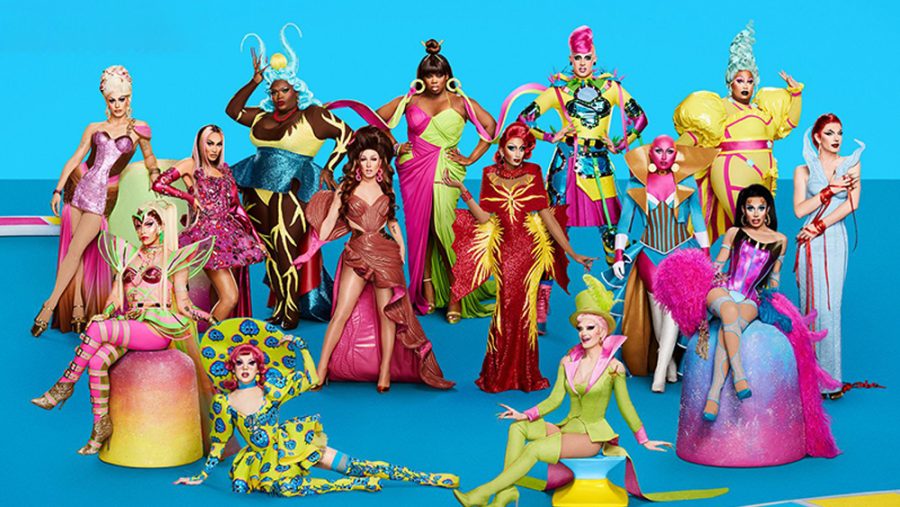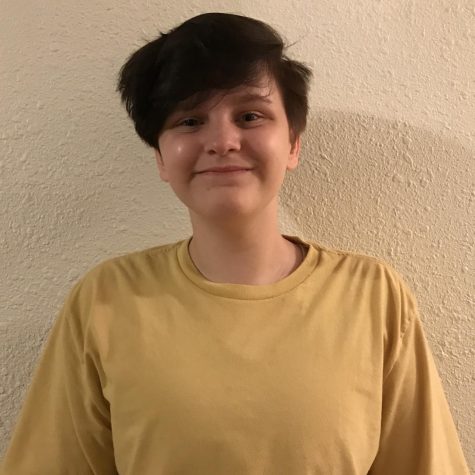Part of a Ru-velution
March 17, 2022
For more than a decade, drag queen RuPaul Charles has brought attention to the art of drag with his award winning show RuPaul’s Drag Race. Mingled in between mini challenges of talent, maxi challenges, and various runway themed challenges, contestants often address issues and challenges they’ve faced personally and professionally.
Originally, the cast of contestants mainly identified as gay men, but today, as there is in society, there are contestants who identify as transgender, non binary, and this most recent season even saw the first heterosexual male drag queen. The show has not just opened eyes to the experiences of members of the LGBTQIA+ community, it has served to open a dialog about preconceived notions and opinions about those in the community.
In it’s infancy, Drag Race consisted of 10-12, usually gay, male drag queens all vying for the title of “America’s Next Drag Superstar.” These contestants would be judged on their “charisma, uniqueness, and talent” whether they had been assigned into teams or on an individual level. In between challenges, the “workroom” would be abuzz with preparation and conversations between contestants that ranged from funny stories to heartbreaking tales of rejection from family and friends.
In these candid moments, individual interviews with contestants would often show the sheer heartbreak and need for acceptance. But it was during the Season 2 reunion of the contestants that Kylie Sonique Love, who had been eliminated fourth, was the first Drag Race contestant to come out to her castmates as transgender. Love was later invited back to compete for the All Stars Drag Race season 6, ultimately becoming the first transgender queen to win the crown.
Yet, it took a while for that to even be an opportunity for Love and other transgender queens. In a 2018 interview with The Guardian, Charles was asked about transgender queens competing. His response, “You can identify as a woman and say you’re transitioning, but it changes once you start changing your body. It takes on a different thing; it changes the whole concept of what we’re doing,” sparked outrage from the transgender community.
Making matters even worse, Charles later tweeted “You can take performance enhancing drugs and still be an athlete,” RuPaul wrote, “just not in the Olympics.”
Within hours, a swift backlash forced Charles to reevaluate his position, and he walked back his comments by tweeting “I understand and regret the hurt I have caused,” he wrote. “The trans community are heroes of our shared LGBTQ movement. You are my teachers.”
While for some the damage was done, for others, Charles’ change in position on transgender queens competing after transitioning was a welcome opportunity to express themselves through the art of drag.
Drag queen K. James explains “The major point of performing as a trans person for me is taking control of how people see me. Because trans people are objectified: We face violence and street harassment, or just being generally stared at, being objectified and pathologized by doctors in the medical community as a whole.”
He continued “But when you’re a trans person and you get to put yourself onstage, you’re basically inviting people to objectify you in a way, but you are taking back the control of that objectification.”
Drag Race has gone on to not only see a wave of gay and transgender contestants, but contestants who identify as non-binary like Jinx Monsoon and Gigi Goode. Additionally, the current season featured a heterosexual male queen named Maddy Morphisis.
Over the years, Drag Race has won numerous industry and activism awards for shining a spotlight on not just the art of drag, but the human stories behind it. Visibility and understanding has widened as a result of this long running show, but begs the question: If a television show can adjust their position on being more open to the entire LGBTQIA community, why can’t a public school do the same?


